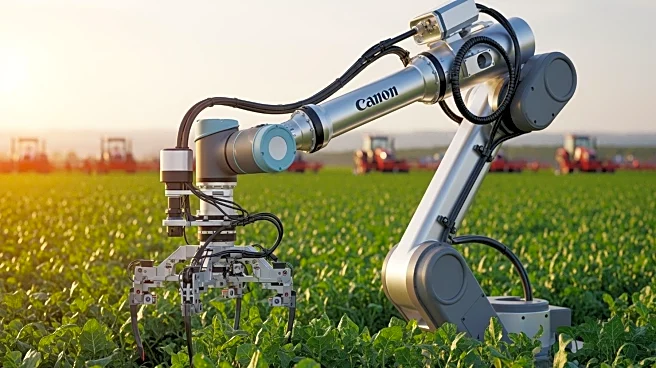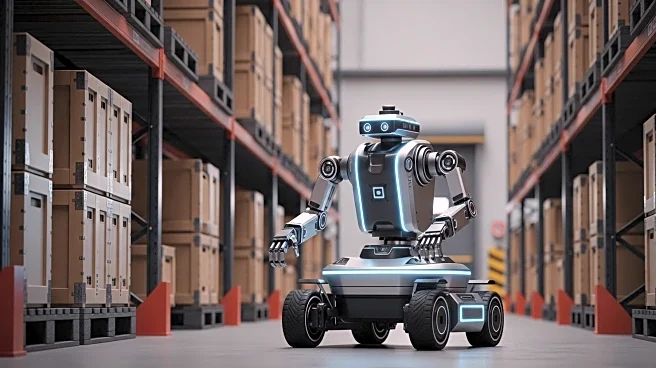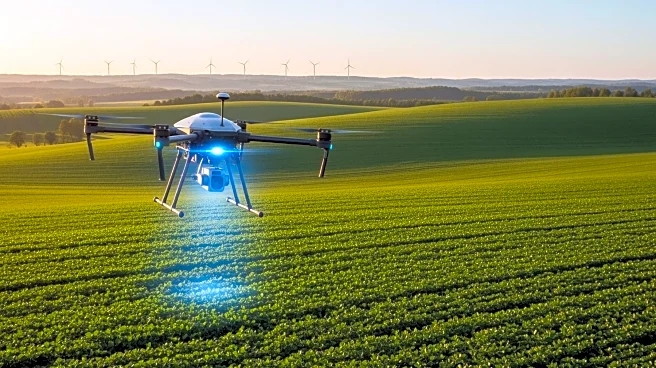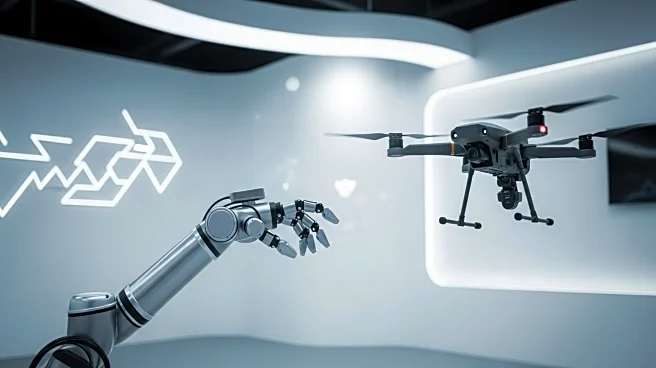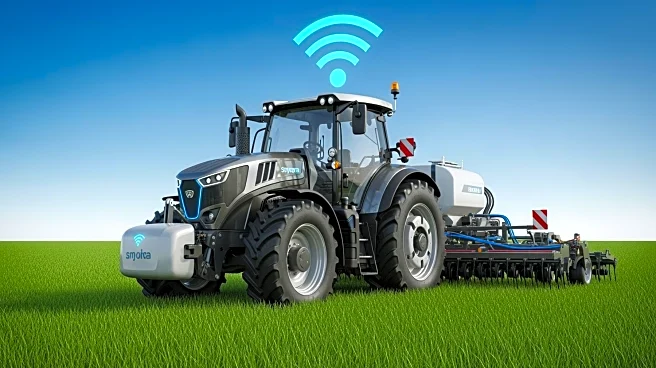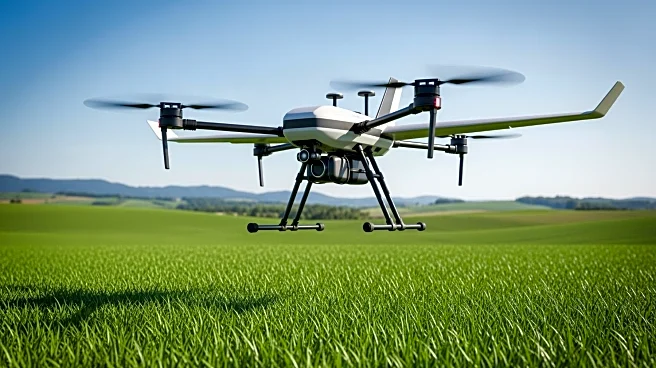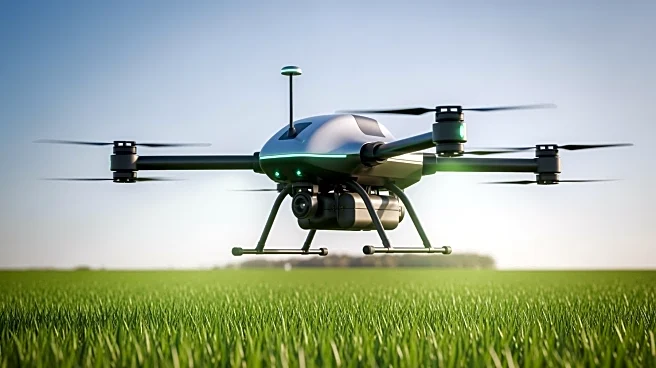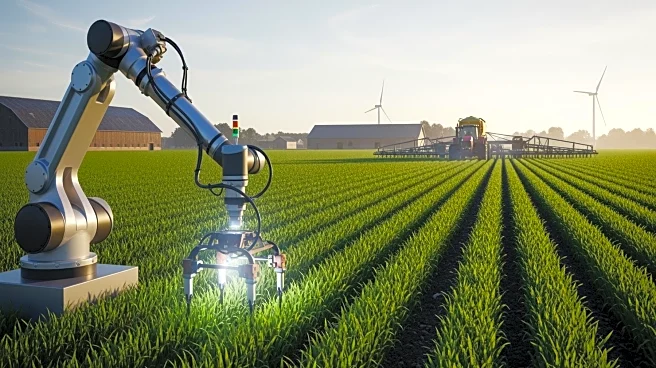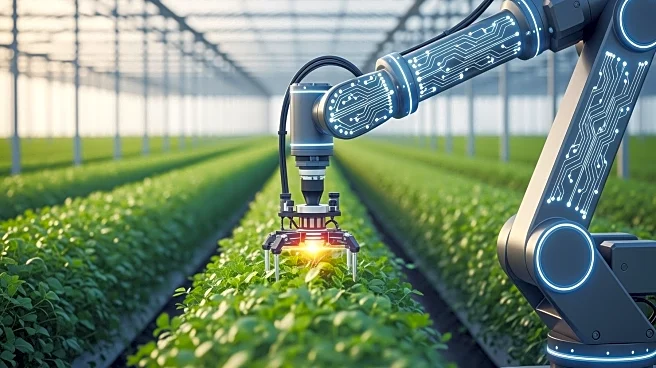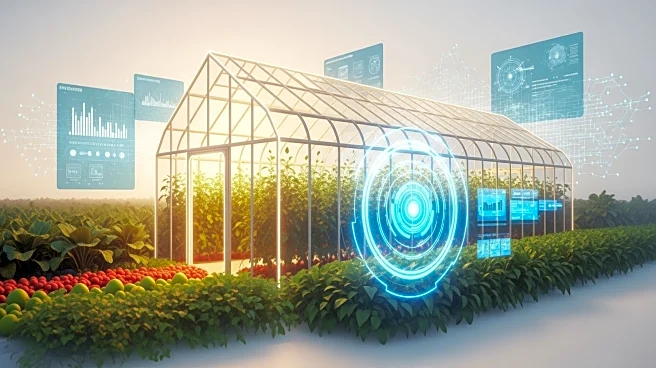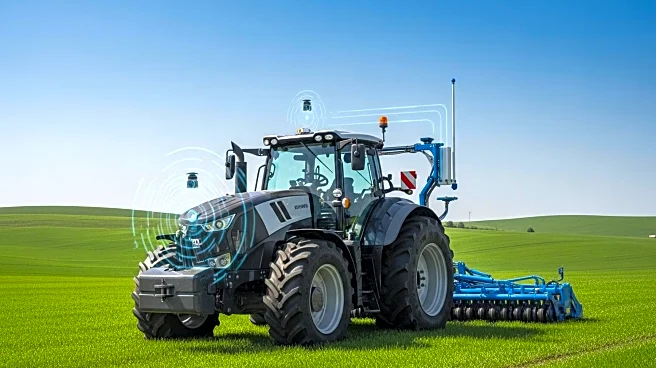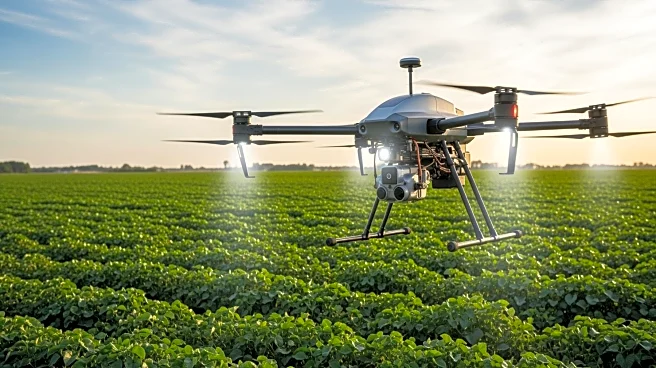What's Happening?
Robotic technologies are transforming smart farming by integrating autonomous vehicles, drones, sensor networks, and intelligent software to optimize productivity and sustainability. These systems collect and analyze data, perform precise tasks, and adjust
operations dynamically, addressing challenges such as labor shortages and climate stress. Autonomous tractors and drones are being used for planting, monitoring, and harvesting, while sensor networks provide real-time data for resource allocation. Despite rapid progress, most agricultural robots are in early commercial or pilot phases, primarily in high-value crop operations.
Why It's Important?
The integration of robotics in agriculture is crucial for enhancing efficiency and sustainability in food production. By automating tasks and providing data-driven insights, these technologies can help farmers overcome labor shortages and environmental challenges, leading to more resilient and adaptive farming practices. The shift towards smart farming could significantly impact food security and resource management, making agriculture more responsive to changing conditions and demands.
What's Next?
As robotic technologies continue to advance, their role in agriculture is expected to grow, with potential for large-scale deployment in diverse farming operations. Innovations such as robotic swarms and AI-driven decision platforms could further enhance efficiency and sustainability. The development of regulatory frameworks and training programs will be essential to support the widespread adoption of these technologies, ensuring they are accessible and beneficial to farmers across different scales and regions.
Beyond the Headlines
The adoption of robotics in agriculture raises ethical and regulatory considerations, particularly regarding data privacy and the impact on traditional farming practices. Ensuring equitable access to these technologies is crucial to prevent disparities between large and small-scale operations. Additionally, the integration of AI and machine learning in farming could lead to significant shifts in labor dynamics, requiring new skills and training for the agricultural workforce.
